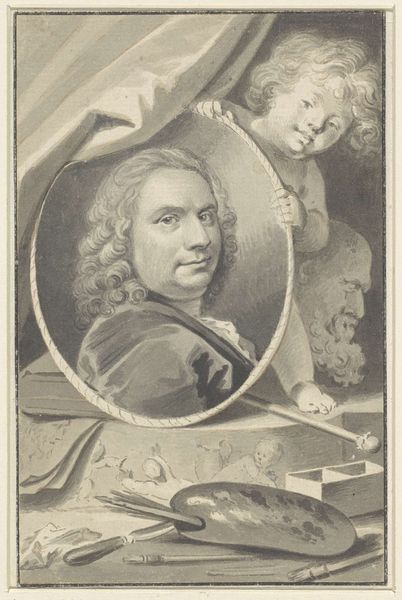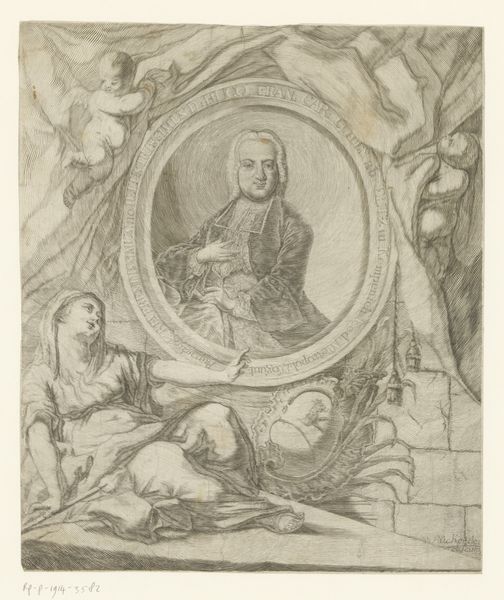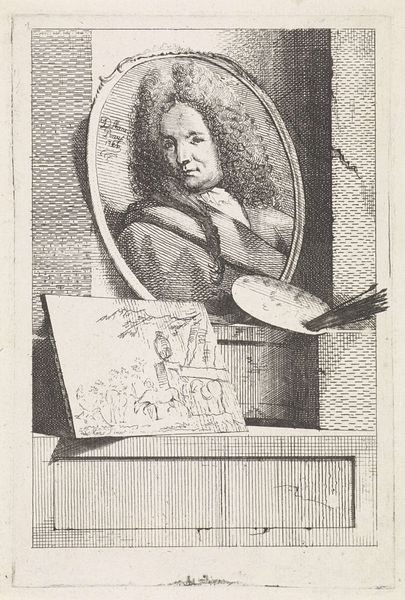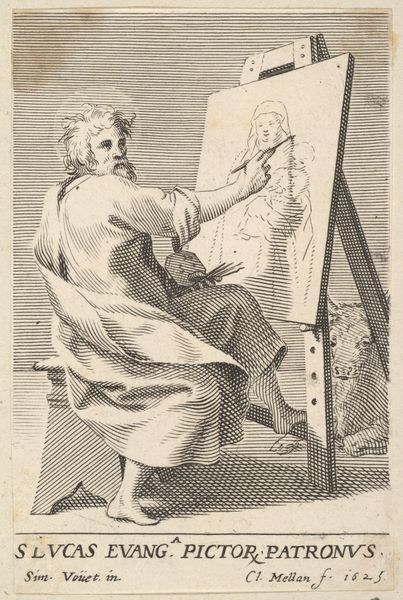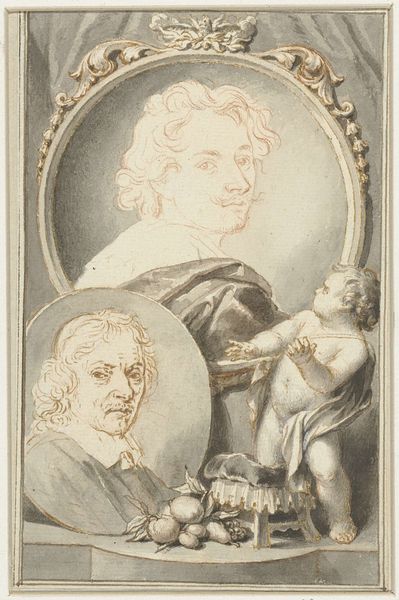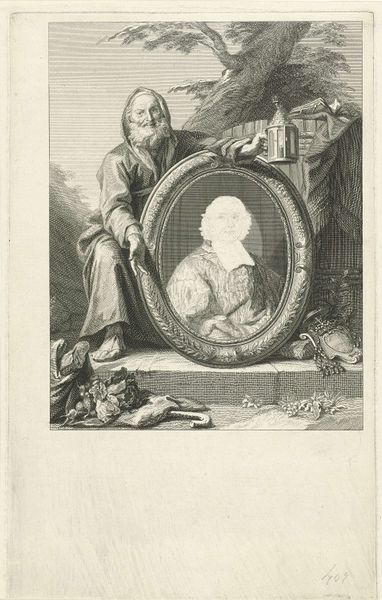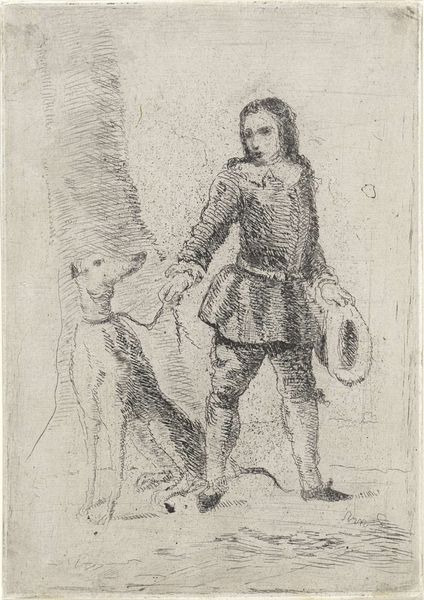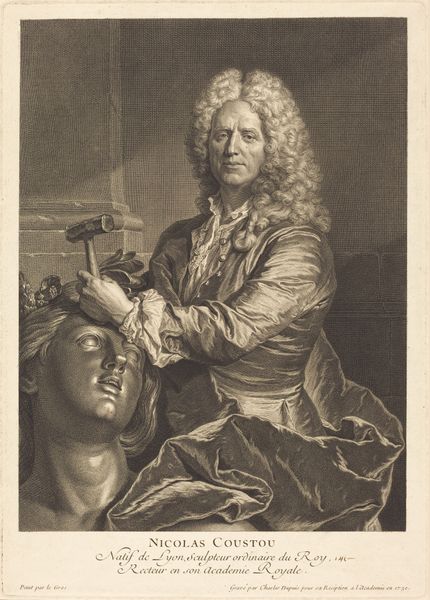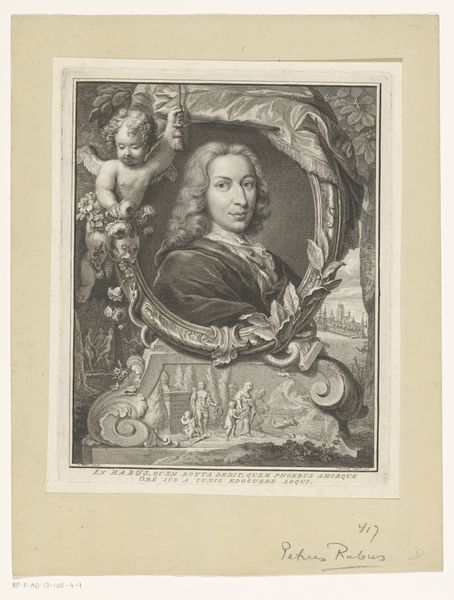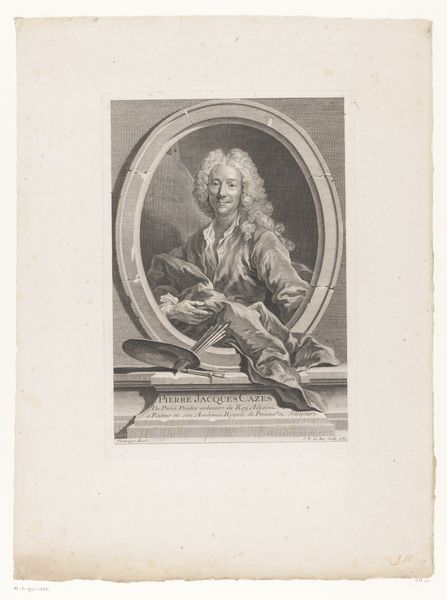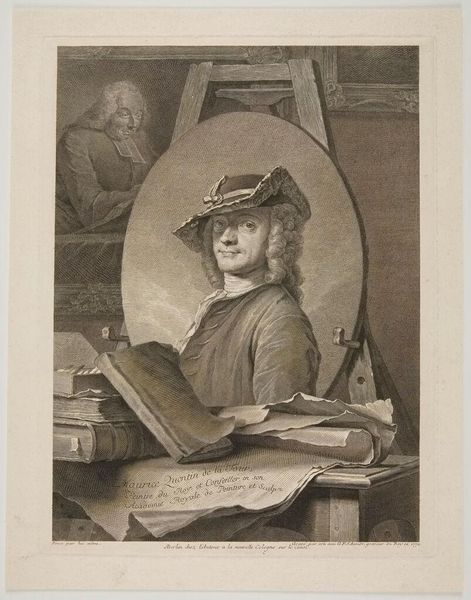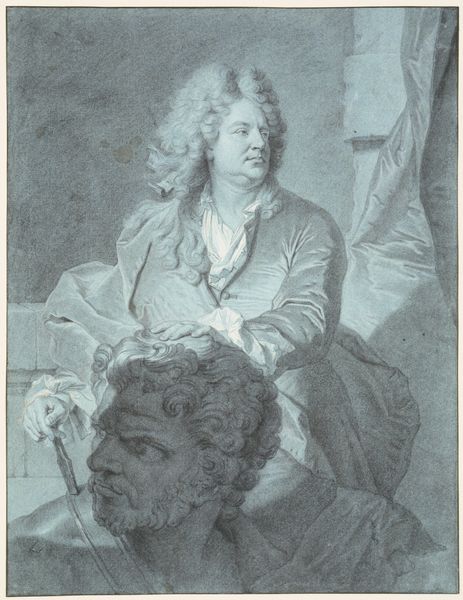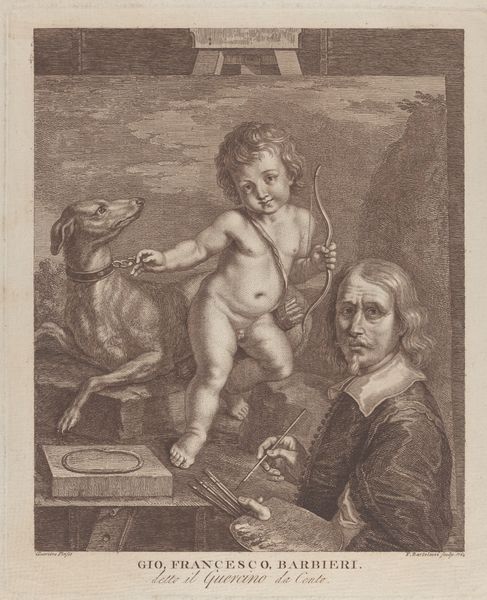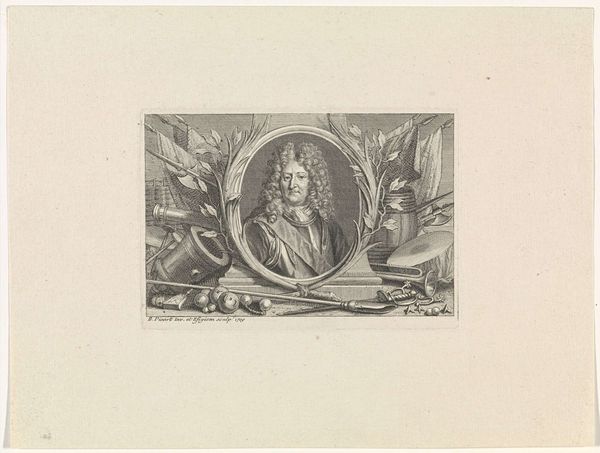
drawing, charcoal
#
portrait
#
drawing
#
self-portrait
#
baroque
#
charcoal drawing
#
surrealism
#
portrait drawing
#
charcoal
Dimensions: height 241 mm, width 153 mm
Copyright: Rijks Museum: Open Domain
Curator: Jacob de Wit created this self-portrait between 1705 and 1754. It's a charcoal drawing titled "Zelfportret in medaillon omringd door schildersattributen"—"Self-portrait in a medallion surrounded by painter's attributes." Editor: The immediate impression is quite intriguing! It's as if we're peeking into de Wit's studio, not just seeing his face, but surrounded by the very tools and even the inspiration behind his craft. The texture of the charcoal is captivating. Curator: Yes, and considering de Wit’s prominent role in popularizing ceiling painting and his impact on religious institutions, one might argue this self-portrait is an assertion of artistic autonomy within the baroque context, where art served institutional power. Editor: I agree. There’s such an overt display of the materials – the charcoal itself, the books, the palette. I find myself thinking about the labour involved. These weren't mass-produced goods. Someone quarried the stone for pigments, processed the charcoal… it's all deeply embedded in a material process. Curator: Absolutely. Note how de Wit portrays himself with confidence, almost theatrical. The putto adds an interesting layer; its inclusion signifies a nod to classical ideals. But could it also be read as a deliberate performance of the artist as divinely inspired, further cementing his position in society? Editor: Possibly. The putto also seems to physically support the medallion, suggesting labour at every layer of art-making. I wonder, given de Wit’s other works, what the availability and consumption of charcoal like this indicated about artistic trends in that era. Was this specific medium accessible? Curator: Good question. Charcoal allowed for dramatic tonal gradations and spontaneity, which became increasingly prized as artistic tastes shifted. This artwork would have functioned as a statement of his creative capabilities. It reflects the growing appreciation for artistic individuality that altered artists' roles within Dutch society. Editor: A very controlled and compelling piece. It brings to mind so many practical considerations on the transformation from raw materials into images and ideas that define the artistic world, in which de Wit firmly situated himself. Curator: It certainly offers an invitation to consider not just the subject of the portrait, but the historical moment and socio-cultural networks that supported its very creation. Editor: Exactly, which is precisely why unpacking the tangible parts, processes, and resources matters – that self-portrait is really just the final output of that material reality.
Comments
No comments
Be the first to comment and join the conversation on the ultimate creative platform.
